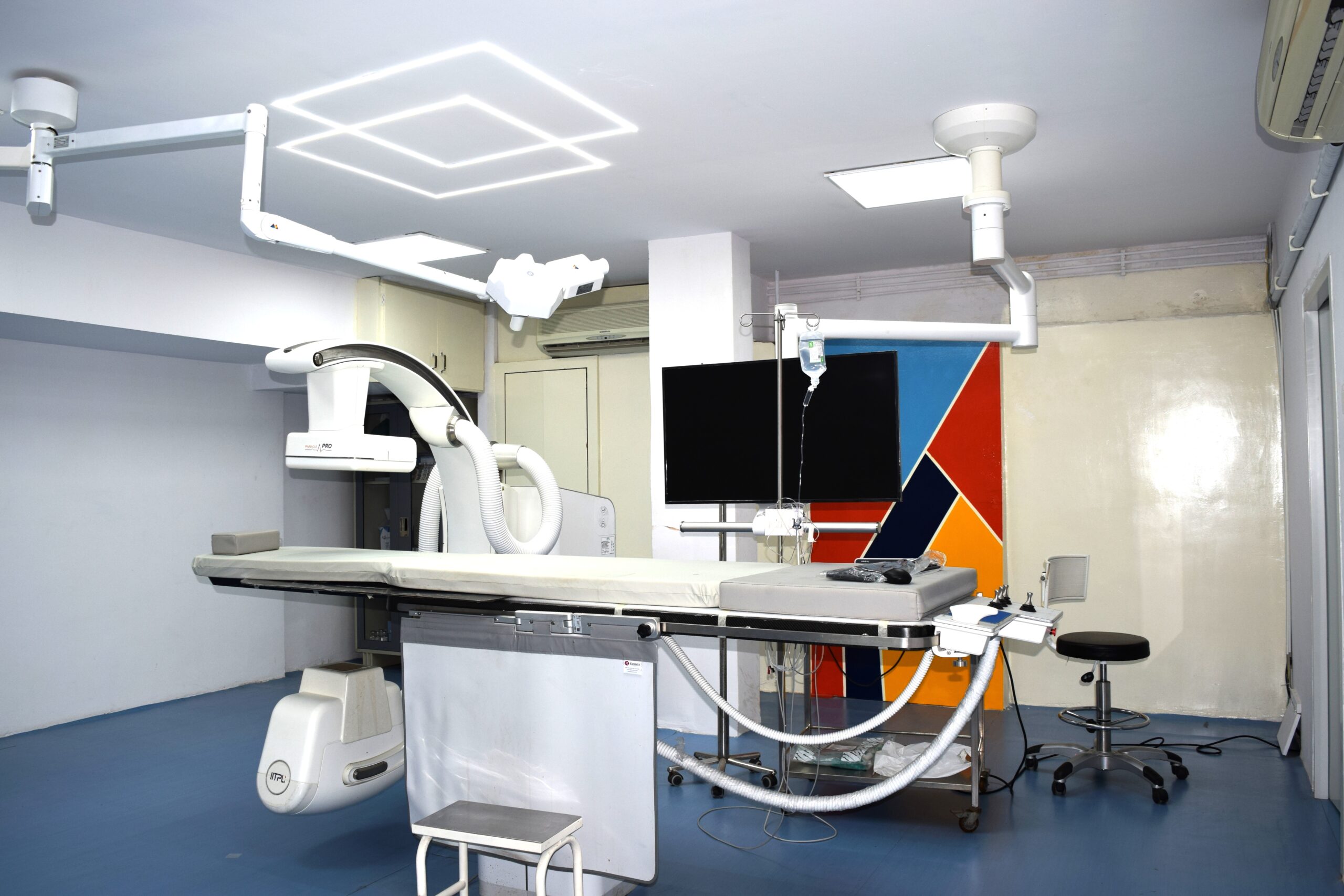- DEPARTMENT
- MEDICAL ONCOLOGY
- SURGICAL ONCOLOGY
- NEPHROLOGY
- UROLOGY
- MEDICAL GASTROENTEROLOGY
- SURGICAL GASTROENTEROLOGY
- NEUROLOGY
- NEURO SURGERY
- PEDIATRIC SURGERY
- PLASTIC SURGERY
- CARDIOLOGY
- GENERAL SURGERY
- ORTHOPEDICS
- OBSTETRICS & GYNECOLOGY
- GENERAL MEDICINE
- PEDIATRICS
- PULMONOLOGY
- DERMATOLOGY
- ENT
- MAXILLOFACIAL SURGEON
- DENTAL SCIENCES
- ANAESTHESIA & CRITICAL CARE
- EMERGENCY MEDICINE & TRAUMA
- PAIN MANAGEMENT
- PATHOLOGY
- PHYSIOTHERAPY
CARDIOLOGY

Dr. Pabba Anish
MBBS MD,DM CONSULTANT INTERVETIONAL CARDIOLOGIST
Cardiology, a branch of internal medicine, focuses on the diagnosis, treatment, and prevention of diseases related to the cardiovascular system, including the heart and blood vessels. Cardiologists are specialized physicians who possess expertise in managing a wide range of cardiac conditions, from coronary artery disease and heart failure to arrhythmias and congenital heart defects. In this comprehensive guide, we will delve into the multifaceted realm of cardiology, examining its history, significance, diseases, diagnostic techniques, treatment modalities, and recent advancements.
Understanding Cardiology
Historical Perspectives
The roots of cardiology can be traced back to ancient civilizations, where healers observed and documented various cardiac phenomena and proposed theories about the heart’s function and significance. Over the centuries, advancements in medical knowledge, technology, and scientific inquiry led to significant discoveries in cardiovascular physiology and pathology. Pioneering figures such as William Harvey, who described the circulation of blood in the 17th century, and Andreas Vesalius, who provided detailed anatomical illustrations of the heart, laid the foundation for modern cardiology. Throughout history, the field of cardiology has evolved from observational speculation to evidence-based medicine, with contributions from clinicians, researchers, and innovators worldwide.
Anatomy and Physiology of the Cardiovascular System
Heart Anatomy
The heart is a muscular organ located in the thoracic cavity, consisting of four chambers: two atria (upper chambers) and two ventricles (lower chambers). The right side of the heart receives deoxygenated blood from the body and pumps it to the lungs for oxygenation, while the left side receives oxygenated blood from the lungs and pumps it to the rest of the body. The heart is composed of specialized cardiac muscle cells, conduction fibers, valves, and coronary arteries that supply oxygen-rich blood to the myocardium.
Circulatory System
The circulatory system consists of a network of blood vessels that transport oxygen, nutrients, hormones, and waste products throughout the body. Arteries carry oxygenated blood away from the heart to the tissues, while veins return deoxygenated blood back to the heart. Capillaries are small blood vessels that facilitate the exchange of gases, nutrients, and waste products between the blood and tissues. The circulatory system plays a vital role in maintaining homeostasis, regulating blood pressure, and delivering essential nutrients and oxygen to cells.
Cardiac Conduction System
The cardiac conduction system is a specialized network of cells within the heart that coordinates the rhythmic contraction and relaxation of cardiac muscle fibers, generating electrical impulses that regulate heart rate and rhythm. The sinoatrial (SA) node, located in the right atrium, serves as the heart’s natural pacemaker, initiating electrical impulses that travel through the atria, atrioventricular (AV) node, bundle of His, and Purkinje fibers, stimulating ventricular contraction and ejection of blood from the heart.
Common Cardiac Diseases and Conditions
Coronary Artery Disease (CAD)
Coronary artery disease (CAD) is a leading cause of cardiovascular morbidity and mortality worldwide, characterized by the accumulation of atherosclerotic plaques within the coronary arteries, leading to reduced blood flow to the heart muscle. CAD can manifest as angina pectoris (chest pain), myocardial infarction (heart attack), or chronic ischemic heart disease, with risk factors including hypertension, hyperlipidemia, diabetes, smoking, obesity, and sedentary lifestyle.
Heart Failure (HF)
Heart failure (HF) is a complex clinical syndrome characterized by the inability of the heart to pump blood effectively to meet the body’s metabolic demands, leading to symptoms such as dyspnea (shortness of breath), fatigue, edema, and exercise intolerance. HF can result from various etiologies, including ischemic cardiomyopathy, dilated cardiomyopathy, valvular heart disease, hypertension, and myocardial infarction, with management strategies focusing on optimizing cardiac function, reducing symptoms, and improving quality of life.
Congenital Heart Defects
Congenital heart defects are structural abnormalities of the heart present at birth, resulting from abnormal development of the fetal heart during embryogenesis. Congenital heart defects can involve septal defects (e.g., atrial septal defect, ventricular septal defect), cyanotic heart lesions (e.g., tetralogy of Fallot, transposition of the great arteries), or obstructive lesions (e.g., coarctation of the aorta, pulmonary stenosis), with varying degrees of severity and clinical implications. Management of congenital heart defects may require surgical repair, catheter-based interventions, or lifelong cardiac monitoring and follow-up care.
